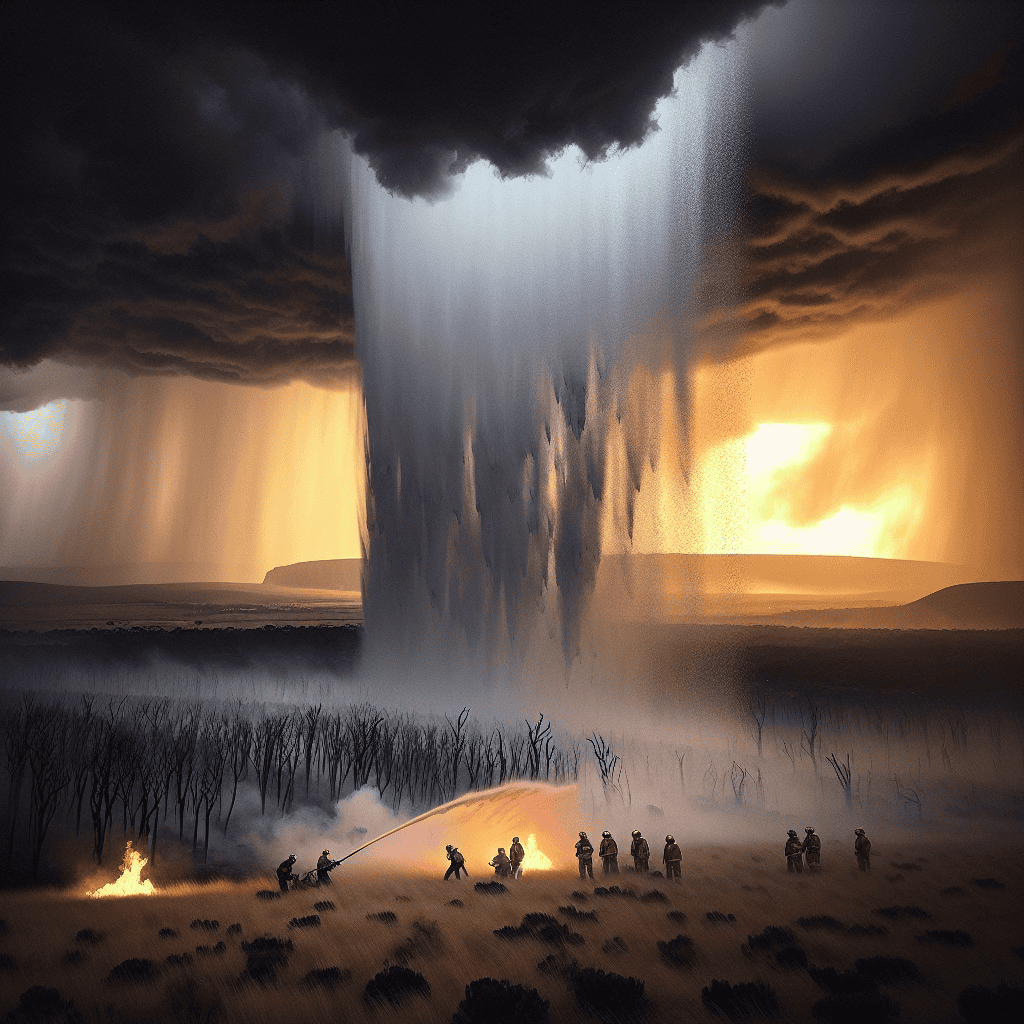Rain Brings Relief as Bushfire in Grampians National Park is Contained
The recent bushfire in Victoria’s Grampians National Park has been successfully contained, thanks to the arrival of a **cool change and significant rainfall**. Firefighters, who have been battling the blaze tirelessly over the past few days, have welcomed this shift in weather as it significantly aided their efforts. This timely intervention has not only prevented further damage but also provided much-needed relief to nearby communities and wildlife across the area.
Let’s delve into the details of how the rain brought hope to a landscape ravaged by fire and how firefighters capitalized on the opportunity.
How the Grampians Bushfire Escalated
Bushfires have long been a part of the Australian landscape, but the Grampians bushfire posed an especially complex challenge. Originating in rugged terrain, the blaze began spreading rapidly due to **dry conditions, strong winds, and high temperatures**. Emergency services worked round the clock, undertaking backburning operations and establishing firebreaks to contain the flames. Despite their efforts, the **fire’s unpredictable behavior and erratic wind changes** made the situation particularly challenging.
At its peak, the bushfire threatened nearby towns and rural communities, prompting evacuations in some areas. Parks Victoria officials closed access to the Grampians National Park, a popular tourist destination, to prioritize public safety.
Environmental Factors Driving the Fire
Dry vegetation and rising summer temperatures created the perfect storm for fire ignition. Experts warned that the **El Niño climate cycle**, which typically brings warmer, drier conditions to Australia, had exacerbated fire risks in the region. Additionally, the rugged terrain of the Grampians, characterized by steep slopes and thick forest, made it difficult for firefighting vehicles to access certain areas. These factors combined to push the emergency to critical levels, demanding exhaustive efforts from both air and ground crews.
Rain and Cool Weather: Nature’s Invaluable Contribution
When rain swept across parts of the region, it proved to be a game-changer. The weather shift slowed the spread of the fire, allowing firefighters to gain the upper hand in their containment efforts. The rain didn’t just lower fire intensity, but it also helped moisten the surrounding vegetation, reducing its flammability. For emergency crews who had been working long hours in extreme conditions, the rainfall was a much-needed ally.
Additionally, the arrival of a **cool change helped to stabilize fire behavior**, with calm winds allowing fire crews to control the situation more effectively. Fire Incident Controller Samantha White described the rainfall as “nothing short of a miracle,” further highlighting how critical favorable weather is in managing bushfire events.
How Firefighters Used the Opportunity
Firefighters, supported by aerial water-bombing aircraft, quickly capitalized on the weather respite. Here’s how they responded to the rain:
- Expanded fire containment lines to prevent the blaze from reigniting.
- Strengthened firebreaks in vulnerable areas.
- Conducted mop-up operations to extinguish smoldering embers threatening regeneration.
- Deployed drones to assess the extent of containment and monitor potential hotspots.
Emergency crews emphasized that while the rain was hugely beneficial, their actions on the ground were critical to bringing the fire under control.
Impact on Communities and Wildlife
The Grampians National Park is not just a natural treasure for Victoria but also a vital habitat for a variety of wildlife. Bushfires often leave a lasting scar, not only on the environment but also on the region’s biodiversity and local communities.
Effects on Wildlife
The park is home to endangered species such as the brush-tailed rock-wallaby and a range of native flora. These species face increased vulnerability during bushfires as **habitat destruction and food shortages** put their survival at risk. Experts have begun assessing the fire’s impact on these species, with plans to support efforts toward regeneration and rehabilitation.
While the rain reduced the fire’s intensity, it could also bring short-term challenges for wildlife, such as flash flooding in scorched areas where vegetation can no longer secure the soil. Local conservation groups are stepping in to address the aftermath.
Community Response and Recovery
Residents near the Grampians expressed relief and gratitude as the fire threat subsided. Many praised emergency services for their dedication to protecting lives and property. Government agencies have also been active in providing support to affected communities, offering financial aid and counseling services to those grappling with the aftereffects of evacuation or property loss.
Local tourism operators, who often rely on the park to attract visitors, are cautiously optimistic about post-fire recovery efforts. They hope to welcome visitors back to the region soon.
Lessons Learned: Preparing for Future Bushfires
The Grampians bushfire serves as a stark reminder of the growing challenges posed by climate change and the importance of community resilience. While the arrival of rain provided a fortunate resolution, experts emphasize that relying on unpredictable weather patterns isn’t sustainable. Instead, they recommend:
- Increased investment in early detection systems.
- Proactive controlled burning to reduce fuel loads.
- Improved coordination between state and federal firefighting agencies.
- Enhanced infrastructure in at-risk areas, such as fireproof shelters.
State officials have also urged residents in fire-prone regions to prepare bushfire survival plans, ensuring that they can act quickly in the event of an emergency.
A Glimmer of Hope for the Grampians
As the Grampians begin the road to recovery, the outpouring of support from across Victoria and beyond highlights the resilience of both people and nature. Firefighters’ tireless efforts, combined with the timely arrival of rain, prevented what could have been a far worse outcome.
The event reinforces the need for collective vigilance as Australia faces an increasingly volatile future due to climate change. In the meantime, the cool change has given the community and environment a well-deserved reprieve — and perhaps a moment to rebuild, regrow, and reconnect.


